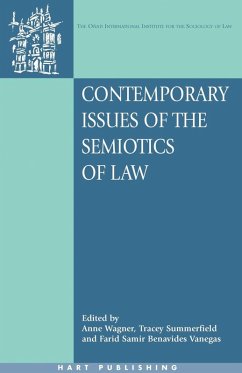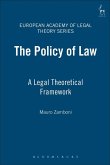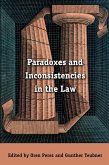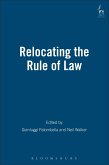The law is a symbolic construction and therefore rests on a variety of undertakings. What gives law its meaning is,for some, ideology, for others, the welfare of the majority. However, what is manifest is a conception of the law as a material structure that carries symbols of everyday life. The analyses that are made in the law and semiotics movements show that the laws symbolism cannot be understood by reference only to itself, a strictly legal meaning. It is a symbol that conveys life, a symbol that in itself is contaminated with life, politics, morality and so on. Law and Semiotics is an obvious meeting point between traditions, because it is the place where all the discussions about the law can find a common language.
This is a collection of different papers where the institution of the law is investigated, in combination with, and as part of, a multiplicity of sign systems. Firstly, law can be understood as part of a global system of meaning (Part I) ; and, secondly, that despite the homogenising threat of globalisation, the play of legal meaning retains a socio-historical specificity (Part II). The global issues of human migration, human rights, colonisation and transnational power are played out in local spaces, in the public discourses through which they are given localised representation, in moments of activism, and as a tool of subversion. The law is a rhetorical device which at once constitutes these global and local truths but which is also constituted by them.
This is a collection of different papers where the institution of the law is investigated, in combination with, and as part of, a multiplicity of sign systems. Firstly, law can be understood as part of a global system of meaning (Part I) ; and, secondly, that despite the homogenising threat of globalisation, the play of legal meaning retains a socio-historical specificity (Part II). The global issues of human migration, human rights, colonisation and transnational power are played out in local spaces, in the public discourses through which they are given localised representation, in moments of activism, and as a tool of subversion. The law is a rhetorical device which at once constitutes these global and local truths but which is also constituted by them.









